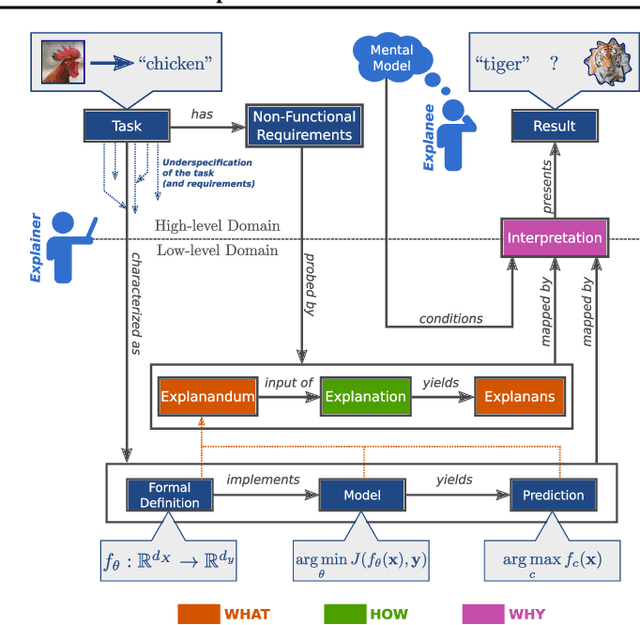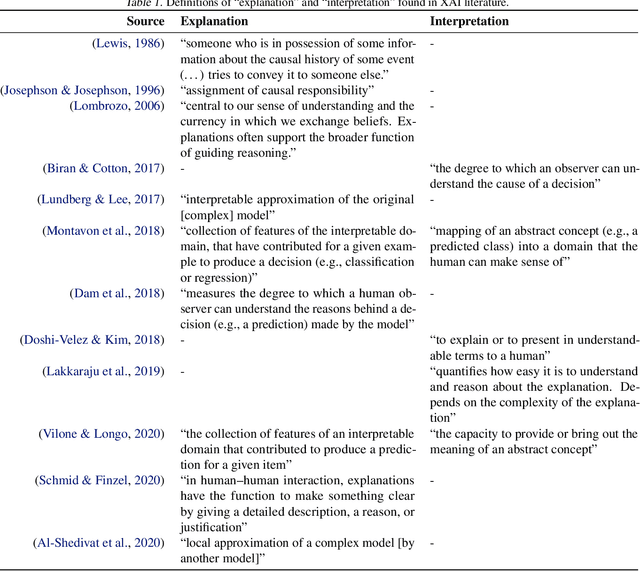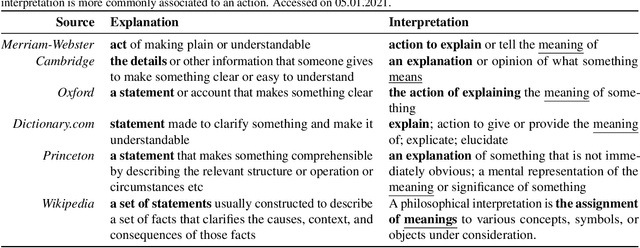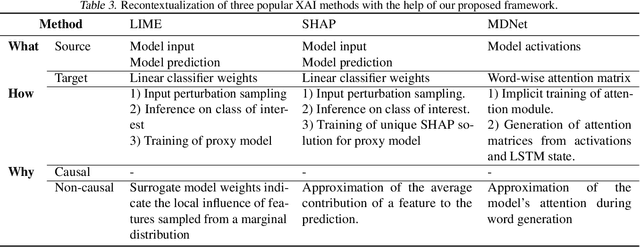XAI Handbook: Towards a Unified Framework for Explainable AI
Paper and Code
May 14, 2021



The field of explainable AI (XAI) has quickly become a thriving and prolific community. However, a silent, recurrent and acknowledged issue in this area is the lack of consensus regarding its terminology. In particular, each new contribution seems to rely on its own (and often intuitive) version of terms like "explanation" and "interpretation". Such disarray encumbers the consolidation of advances in the field towards the fulfillment of scientific and regulatory demands e.g., when comparing methods or establishing their compliance with respect to biases and fairness constraints. We propose a theoretical framework that not only provides concrete definitions for these terms, but it also outlines all steps necessary to produce explanations and interpretations. The framework also allows for existing contributions to be re-contextualized such that their scope can be measured, thus making them comparable to other methods. We show that this framework is compliant with desiderata on explanations, on interpretability and on evaluation metrics. We present a use-case showing how the framework can be used to compare LIME, SHAP and MDNet, establishing their advantages and shortcomings. Finally, we discuss relevant trends in XAI as well as recommendations for future work, all from the standpoint of our framework.
 Add to Chrome
Add to Chrome Add to Firefox
Add to Firefox Add to Edge
Add to Edge